Spain holds more layers of history than almost anywhere else in Europe. From Roman ruins to Moorish palaces, from Gothic cathedrals to Renaissance squares, the country’s cities tell stories spanning over two millennia. Here are 18 historic Spanish cities that showcase the remarkable cultural tapestry woven by Romans, Visigoths, Muslims, Jews, and Christians across the centuries.
Toledo

— Photo by Changered
Known as the “City of Three Cultures,” Toledo rises dramatically from the banks of the Tagus River like something from a medieval fairy tale. Successively a Roman municipality, Visigothic capital, Moorish fortress, and seat of Spanish imperial power under Charles V, this UNESCO World Heritage city preserves over 2,000 years of continuous history.
The smell of ancient stone mingles with incense from countless churches as you wander narrow cobblestone streets. But it’s the sword-making tradition that really cuts deep here—Toledo steel was legendary even in Roman times.
Córdoba
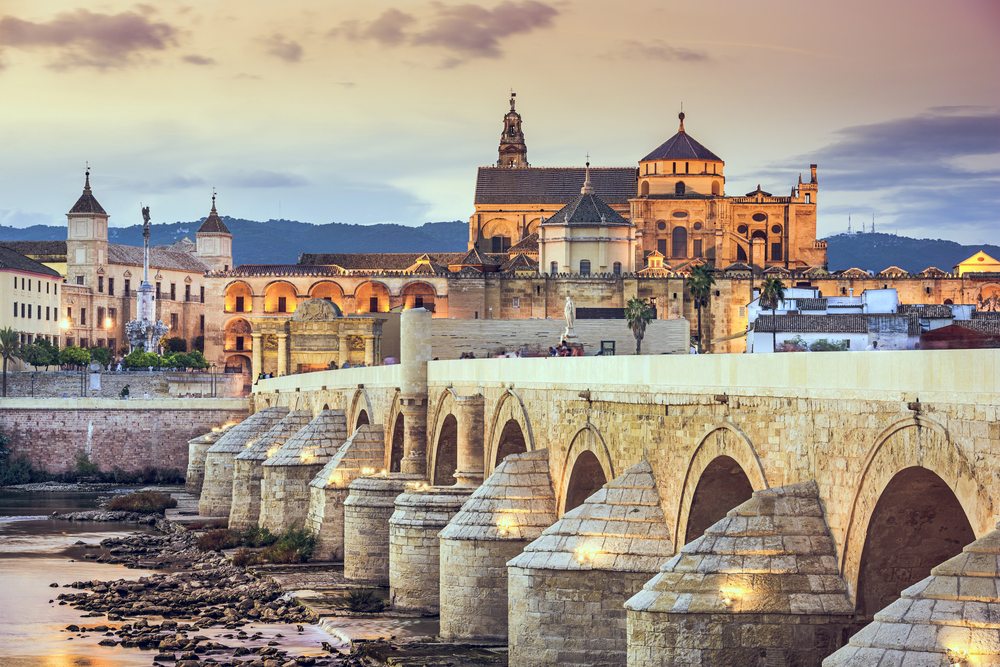
Once the largest city in the Western world, Córdoba was the glittering capital of Islamic Spain. The Great Mosque, or Mezquita, stands as one of the most extraordinary buildings ever constructed. Its forest of horseshoe arches creates an almost hypnotic rhythm.
And then there’s Medina Azahara just outside the city. Forgotten for centuries, these palace ruins were once fit for caliphs.
Seville

The largest old town in Spain sprawls across Seville’s historic center, where every corner whispers tales of conquistadors and flamenco dancers. The cathedral here is the largest Gothic building in the world. Not bad for a city that started as Roman Hispalis.
Christopher Columbus is buried here. The Alcázar’s Moorish gardens still bloom with orange trees. Still, it’s the rhythm of castanets echoing through ancient courtyards that truly captures Seville’s soul.
Granada

The Alhambra complex crowns this Andalusian gem like a jeweled crown. Built by Moorish rulers in the 13th and 14th centuries, its intricate geometric patterns and serene courtyards represent the pinnacle of Islamic art in Europe.
Below the fortress, the Albaicín neighborhood tumbles down the hillside in a maze of whitewashed houses and hidden squares. You can still hear the call to prayer echoing from ancient minarets turned church towers.
Santiago de Compostela

Pilgrims have been walking to this Galician city for over a thousand years. The cathedral’s twin spires pierce the Atlantic sky, marking the supposed burial place of Saint James the Apostle. What started as a religious destination became one of medieval Europe’s most important cultural crossroads.
The old town preserves its Romanesque and Gothic splendor remarkably well. During peak pilgrimage season, the narrow streets fill with travelers carrying scallop shells—the symbol of their sacred journey.
Barcelona

Barcelona’s Gothic Quarter predates even the more famous Gaudí creations scattered throughout the city. Medieval palaces line ancient Roman streets, while the cathedral’s Gothic façade looms over quiet squares where locals gather for evening tapas.
The Barrio Gótico contains some surprises: • Roman wall fragments still visible in the basement of the city history museum
• A hidden Jewish quarter with synagogue ruins • Medieval guildhalls that once controlled Mediterranean trade
But honestly, getting lost in these labyrinthine alleys is half the fun.
Salamanca
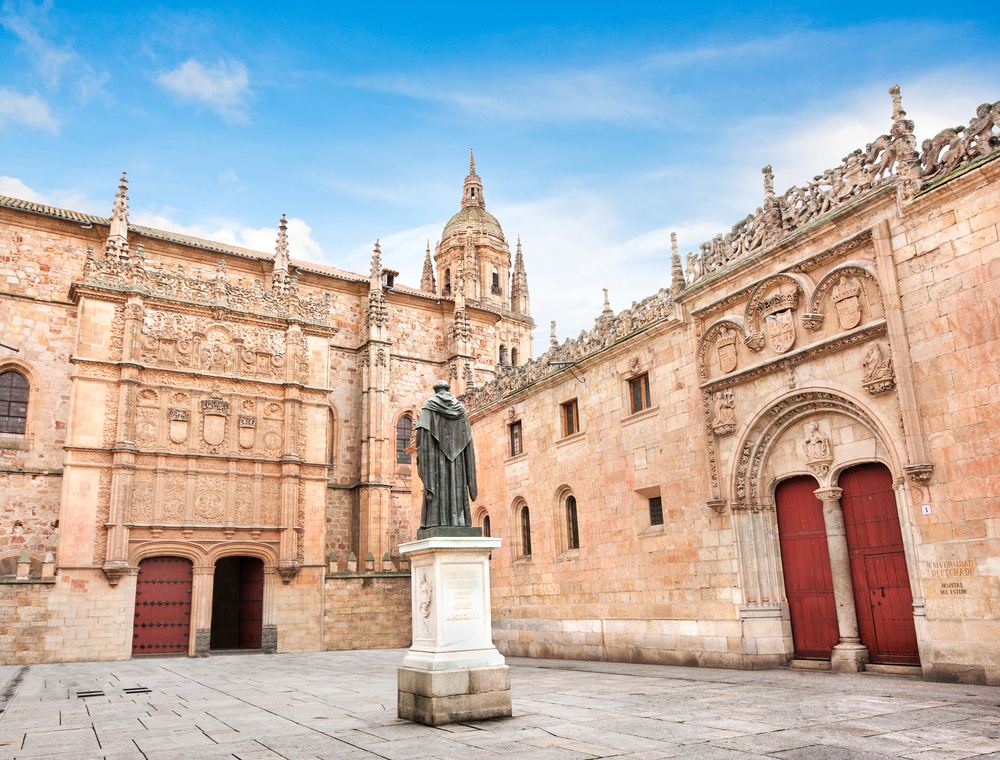
This university town glows golden in the evening light, earning it the nickname “La Dorada.” Founded in 1218, the University of Salamanca is one of Europe’s oldest, and its ornate Plateresque façade rivals any cathedral for decorative detail.
The Plaza Mayor here might be Spain’s most beautiful square. Baroque arcades frame the rectangular space in warm sandstone, creating an outdoor room that’s been the city’s beating heart for centuries.
Segovia
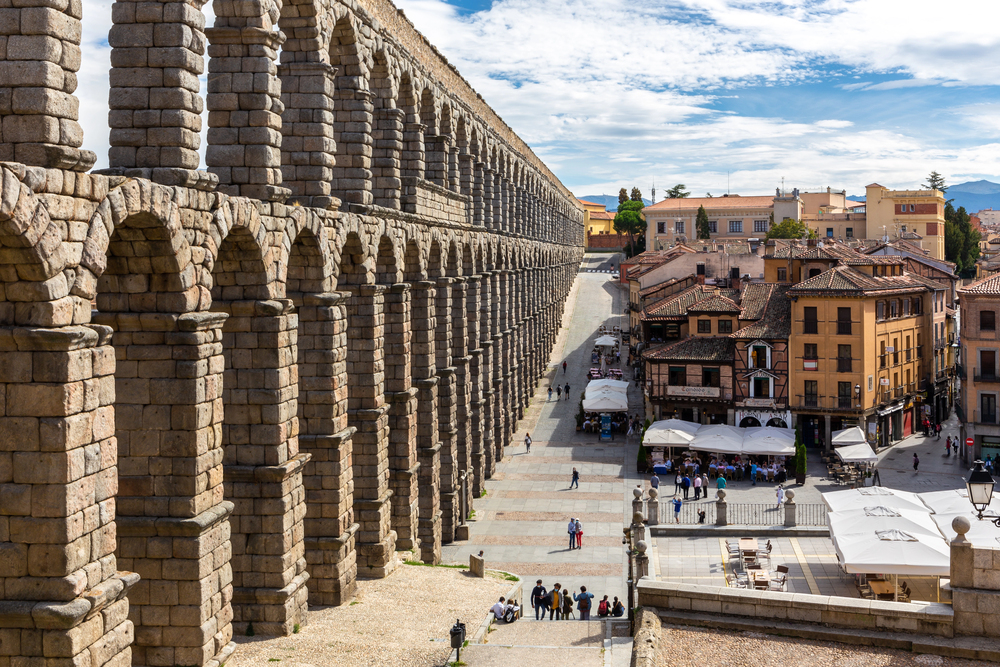
— Photo by cleop6atra
That massive Roman aqueduct marching across the city center? It’s been carrying water for nearly 2,000 years without a drop of mortar holding the stones together. Segovia’s old quarter clusters around this engineering marvel like a medieval movie set.
The Alcázar castle inspired Disney’s Cinderella Castle. The cathedral represents the last flowering of Spanish Gothic architecture. Could be worse.
Ávila
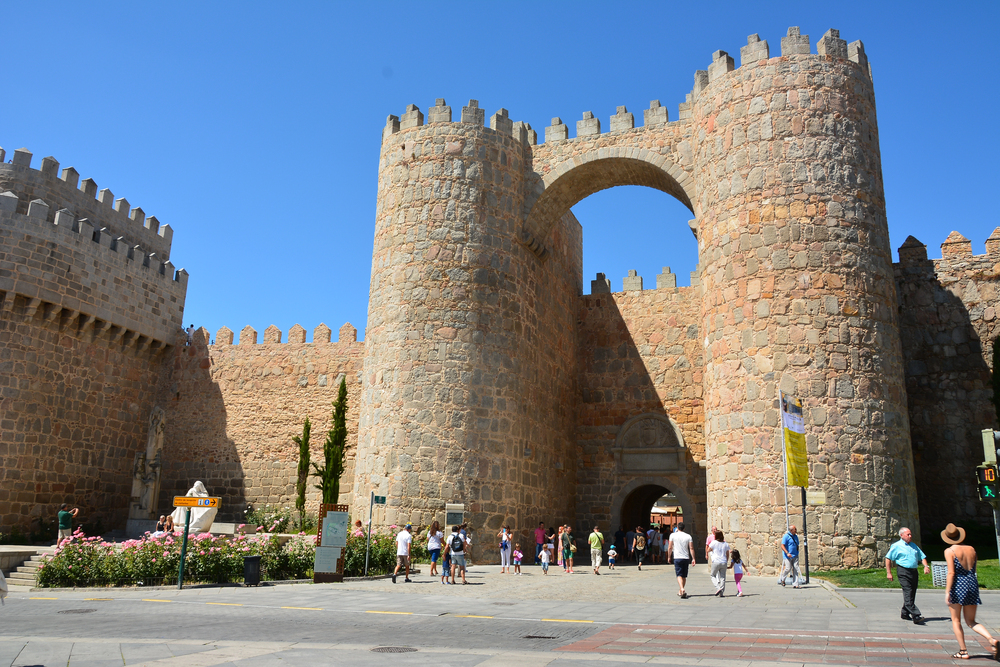
— Photo by javigares
Medieval walls encircle this entire city—all 2.5 kilometers of them. Ávila’s fortifications are the most complete in Spain, punctuated by 88 towers that still stand guard over the Castilian plain.
Saint Teresa was born here in 1515, and the city retains a mystical atmosphere that seems to transport visitors back to the age of knights and saints. The walls glow amber at sunset, creating one of Spain’s most photographed vistas.
Cáceres
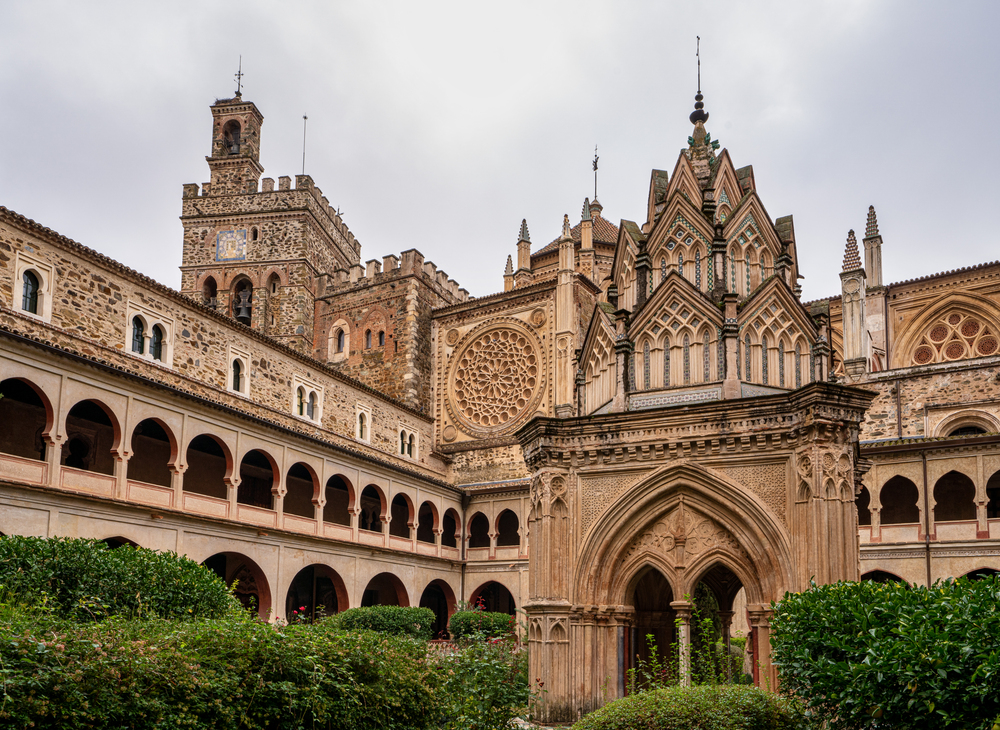
This fortified town feels frozen in time. Moorish and Christian architectural elements blend seamlessly in the old quarter, where noble families built their palaces within ancient walls. Storks nest on medieval towers while swallows dive between Gothic arches.
Walking these cobblestone streets after dark, when modern intrusions fade into shadow, you can almost hear the clash of medieval armies echoing off the stones.
Cuenca

Hanging houses cling to clifftops above the Huécar River in one of Spain’s most dramatic cityscapes. These famous casas colgadas seem to defy gravity as they perch on the precipice, their wooden balconies suspended over the rushing water below.
The cathedral here was Spain’s first Gothic church, built after the Christian reconquest in the 12th century. The old town spreads across a rocky promontory, its streets carved into the living rock.
Alcalá de Henares

The world’s first planned university city, Alcalá de Henares created the template that Oxford and Cambridge would later follow. Miguel de Cervantes was born here, and you can visit his childhood home near the university’s stunning Plateresque courtyard.
The university’s Great Hall features intricate Mudéjar ceilings that took Moorish craftsmen decades to complete. This is where Spanish monarchs received the prestigious Cervantes Prize, Spain’s highest literary honor.
Mérida
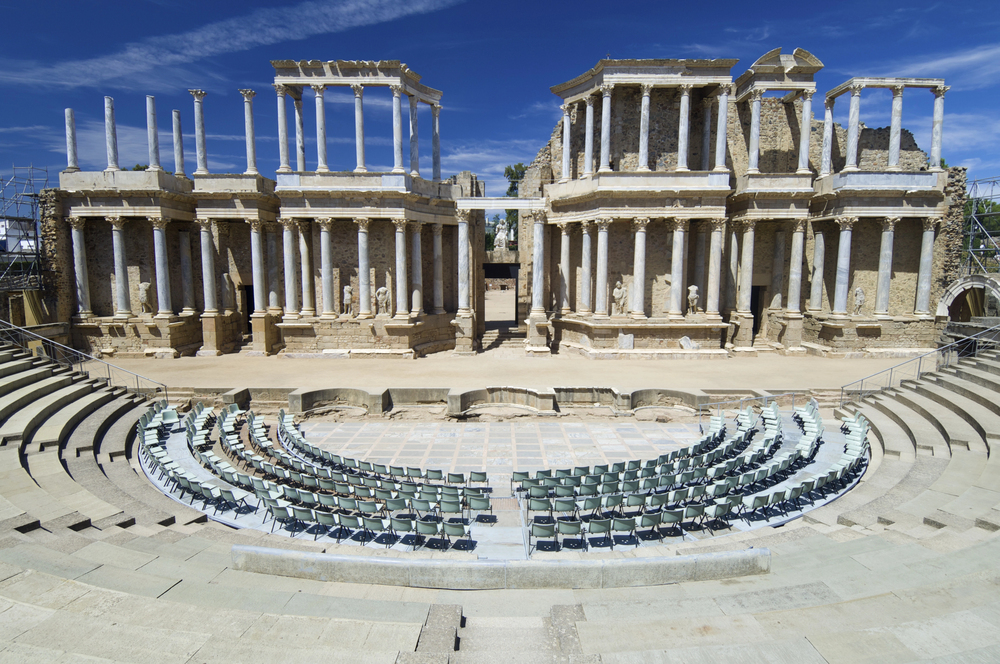
Roman ruins sprawl across this Extremaduran city like an open-air archaeological museum. Founded by Emperor Augustus in 25 BCE, Emerita Augusta became one of the most important cities in the Roman Empire. The theater and amphitheater complex ranks among the best-preserved in Europe.
You can still walk across the Roman bridge that spans the Guadiana River. The mosaics in the Roman houses rival anything found in Pompeii for their artistic sophistication and remarkable preservation.
Valencia

— Photo by sergiff
The Silk Exchange, or Lonja de la Seda, represents Valencia’s golden age as a Mediterranean trading power. This Gothic masterpiece housed the merchants who made Valencia one of medieval Europe’s wealthiest cities. Its twisted columns and star-vaulted ceiling create a space both practical and sublime.
The old town preserves Roman walls, Islamic baths, and Gothic churches in a compact area perfect for wandering. Plus, this is where paella was invented—though locals will argue endlessly about the proper recipe.
Tarragona
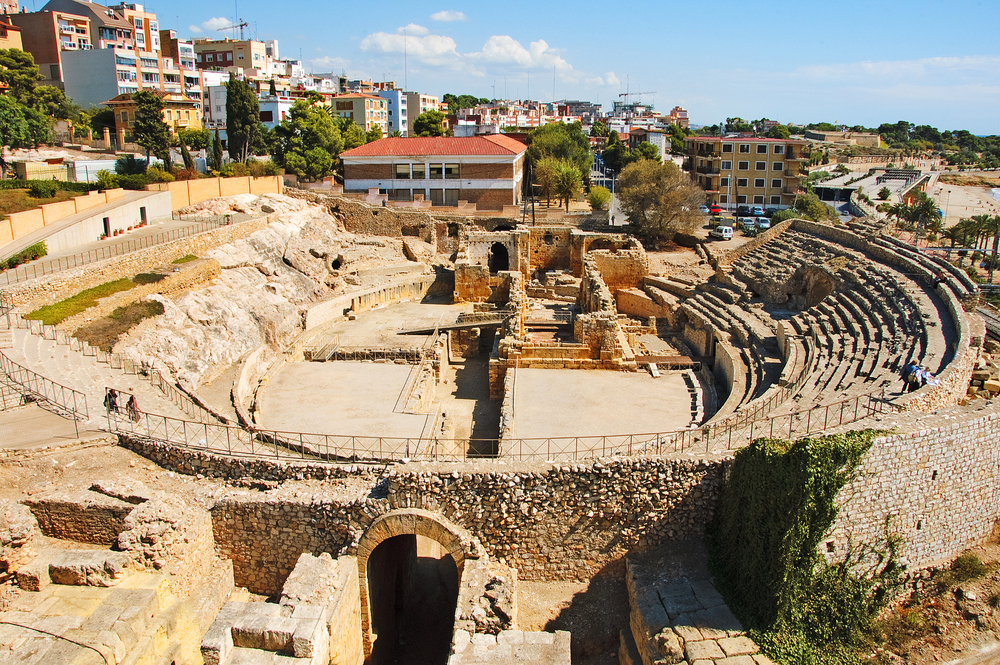
Roman Tarraco was the capital of eastern Spain, and its archaeological remains testify to the city’s former grandeur. The amphitheater overlooks the Mediterranean, where gladiators once fought while waves crashed against the rocks below.
Medieval walls rise from Roman foundations, creating layers of history you can literally touch. The cathedral combines Romanesque and Gothic elements, built over the ruins of a Roman temple dedicated to Jupiter.
Burgos
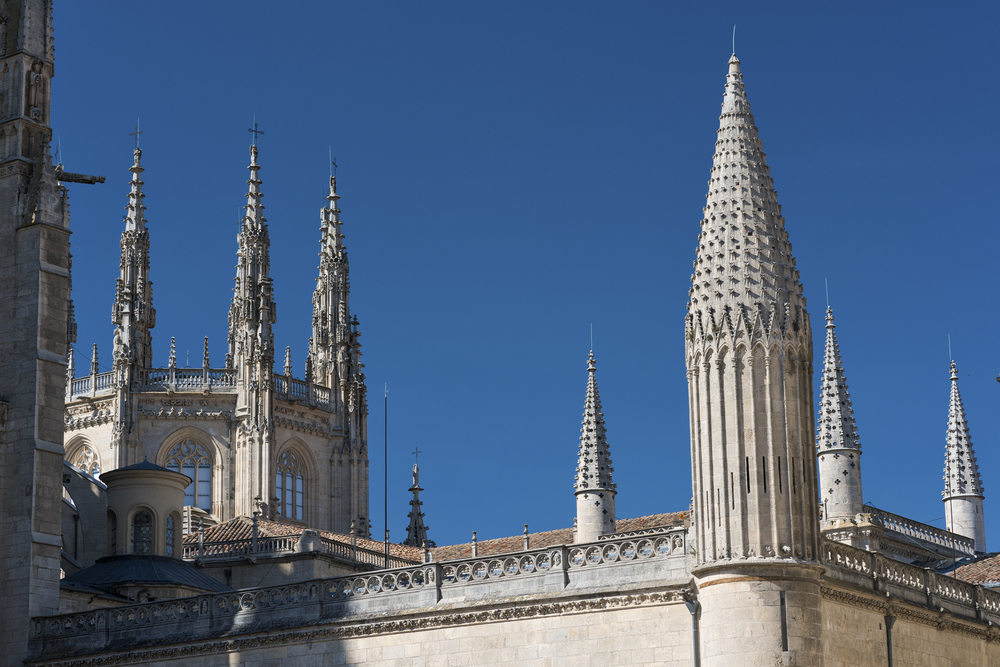
Gothic spires pierce the Castilian sky in this former capital of the Kingdom of Castile. The cathedral’s intricate stonework rivals Notre Dame de Paris for architectural ambition, while the elaborate chapels showcase five centuries of artistic evolution.
El Cid is buried here beneath the cathedral’s central dome. The old quarter preserves its medieval street pattern, though modern Burgos has grown far beyond the ancient walls.
León
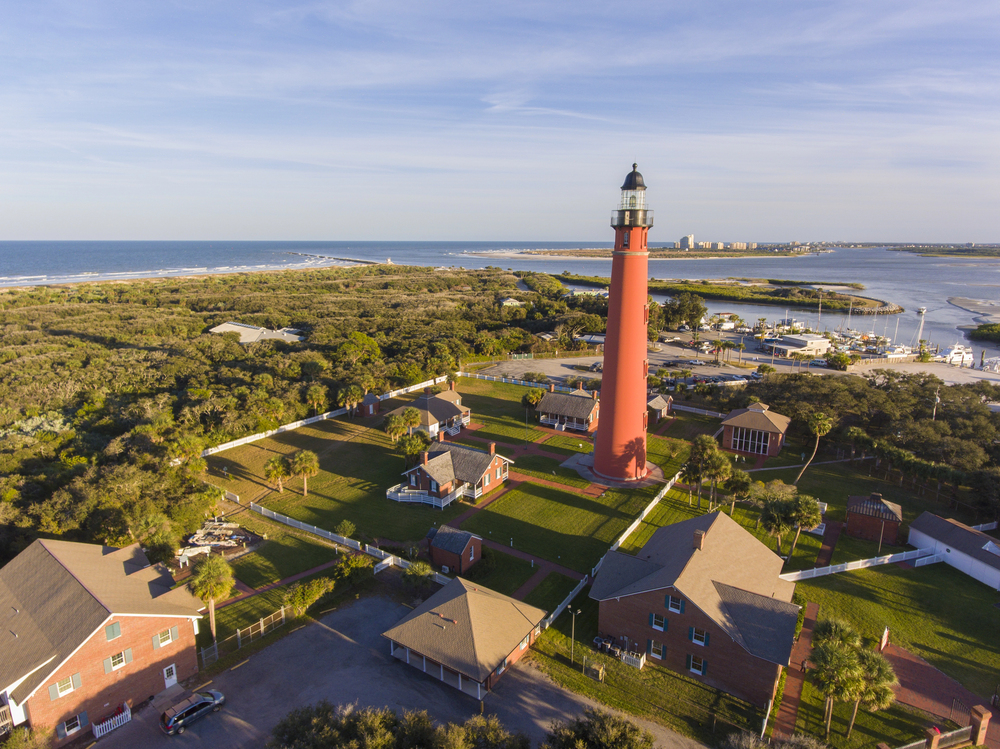
The cathedral’s stained glass windows create one of Europe’s most spectacular light shows as the sun moves across the sky. Known as the “House of Light,” León’s Gothic masterpiece contains more glass than stone in its soaring walls.
The old quarter preserves the Roman street grid, while the Basilica of San Isidoro houses one of Spain’s most important collections of Romanesque frescoes. This city was the capital of medieval León, one of the Christian kingdoms that gradually pushed back Moorish rule.
Girona

Colorful houses line the Onyar River in one of Catalonia’s most photogenic cities. The Jewish Quarter here is one of Europe’s best-preserved medieval Jewish neighborhoods, with narrow alleys and stone staircases climbing toward the cathedral.
The Arab Baths date from the 12th century, built when this was a frontier town between Christian and Muslim Spain. Game of Thrones fans might recognize the cathedral steps—they doubled for the Great Sept of Baelor in the hit series.
Where history lives and breathes
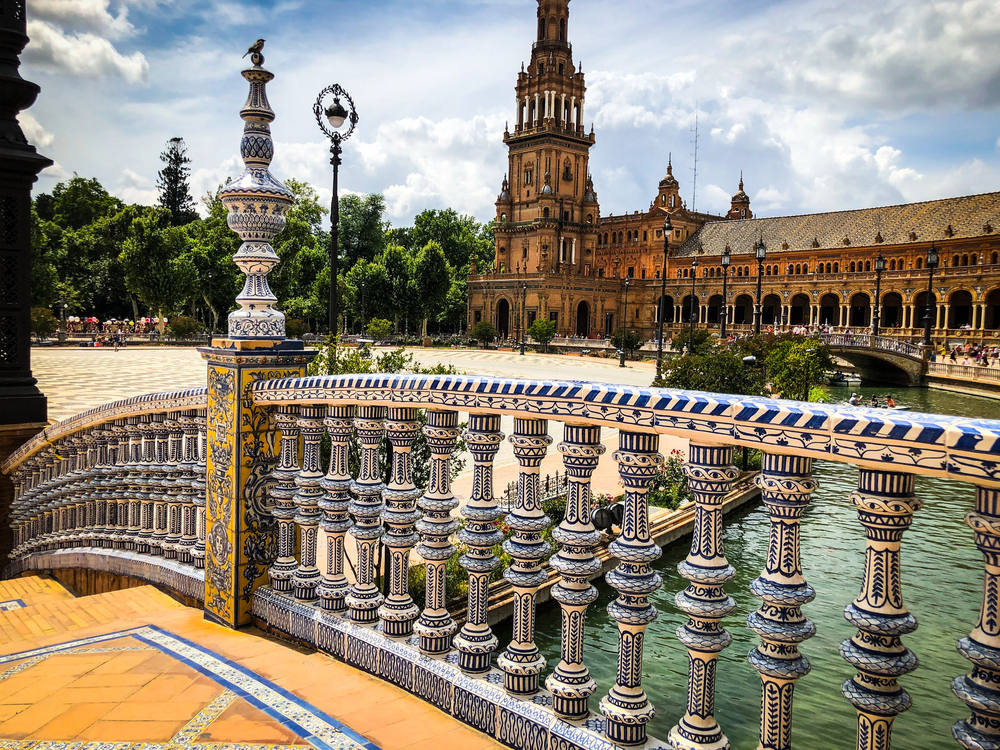
— Photo by Anaisia29
These Spanish cities aren’t museum pieces gathering dust behind velvet ropes. They’re living, breathing places where ancient stones support modern life, where the past informs the present without overwhelming it. Each one offers a different window into the complex, layered story of Spain itself.
More from Travel Pug

- 20 Best Beach Towns in the Carolinas
- 13 Destinations Where Tourists Regularly Regret Their Trip
- 20 Things You Actually Get in First Class
- 20 Small Airports With Aviation Museums
- 20 Places in the U.S. That Are Perfect for a Reset Trip
Like Travel Pug’s content? Follow us on MSN.
